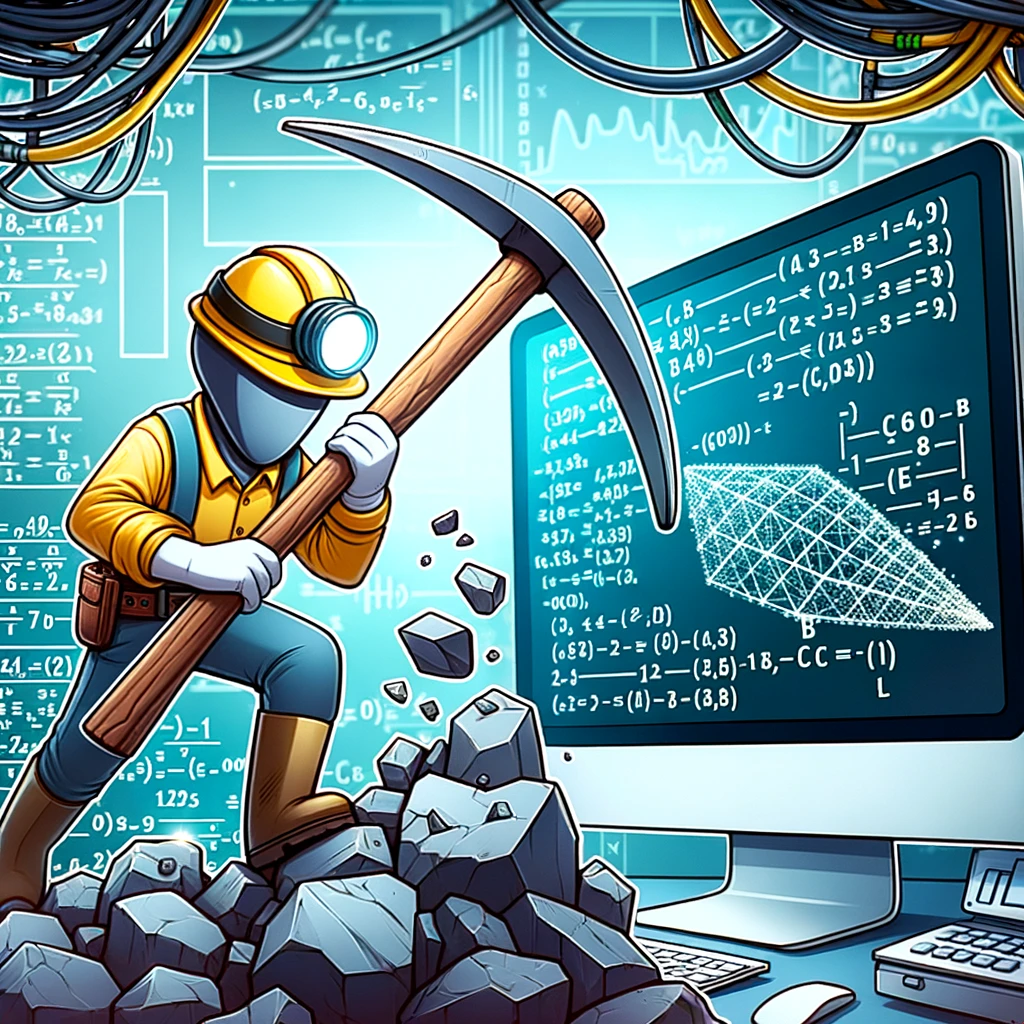Have you ever wondered how your Bitcoin transactions are verified or why mining is a thing?
It all boils down to one ingenious mechanism: Proof of Work (PoW).

Buckle up as we decode this cryptographic marvel that is the bedrock of numerous cryptocurrencies.
What is Proof of Work (PoW)?
Proof of Work (PoW) is a consensus algorithm used in blockchain networks to validate transactions and create new blocks.
It’s like the heartbeat of cryptocurrencies such as Bitcoin and Litecoin.
PoW ensures that all transactions are verified and added to the public ledger securely.
This mechanism requires miners to solve complex mathematical problems, often called cryptographic puzzles.


It’s not a game of luck or chance but a rigorous computational exercise demanding considerable energy and computational power.
Once a miner successfully solves the puzzle, the new block is added to the blockchain, and the miner is rewarded with newly minted cryptocurrency.
This process also releases any transaction fees tied to the block’s transactions, providing an extra incentive for miners.
The History of PoW
Believe it or not, the concept of Proof of Work predates cryptocurrencies.
It was initially developed to combat email spam and denial-of-service attacks.
Satoshi Nakamoto adapted this algorithm to create Bitcoin, the first blockchain-based cryptocurrency.
In the 1993 paper “Pricing via Processing,” Cynthia Dwork and Moni Naor presented the first formalized concept of PoW.
Adam Back later implemented the idea in 1997 in a Hashcash system.
Over the years, the PoW mechanism has been fine-tuned and adopted by various other cryptocurrencies.
It has become the de facto standard for achieving consensus in blockchain networks.
How Does PoW Work?

The inner workings of PoW can be broken down into a series of steps.
First, miners collect transactions from the network’s mempool—a waiting area for unconfirmed transactions—and place them into a new block.
Next, miners compete to solve a cryptographic puzzle. The first one to solve it gets the privilege of adding the new block to the blockchain.
The complexity of this puzzle is adjusted regularly to ensure that blocks are added at a consistent rate.
After a miner successfully adds a new block, other nodes on the network validate it.
If the majority agrees that the block is valid, it becomes a permanent part of the blockchain and rewards the miner.
The Role of Miners

Miners are the backbone of any PoW-based blockchain network.
They invest in specialized hardware and consume significant amounts of electricity to solve cryptographic puzzles, which is crucial in maintaining the network’s integrity.
But why would anyone invest so much time and resources into this endeavor? The answer is simple: rewards.
Miners are compensated with newly minted coins and transaction fees, making the process economically viable.
The competitive nature of mining also ensures that no single entity gains control over the network.
This distributed architecture enhances the security and robustness of the blockchain.
PoW vs. PoS (Proof of Stake)
While PoW enjoys significant adoption, it’s not the only consensus algorithm.
Proof of Stake (PoS) is another popular method used by cryptocurrencies like Ethereum 2.0 and Cardano.
In PoS, validators replace miners and are chosen to create new blocks based on the number of coins they hold and are willing to “stake” as collateral.
PoS is considered more energy-efficient than PoW.
PoW and PoS have pros and cons, but the choice between them often depends on the specific requirements and goals of a blockchain network.
Some projects even use a hybrid of both.
Energy Consumption Concerns
One of the most significant criticisms of PoW is its energy consumption.
The Bitcoin network alone is estimated to consume more energy annually than some small countries.
This high energy cost has led to debates about the environmental impact of PoW-based cryptocurrencies.
Critics argue that such energy consumption is unsustainable in the long run.
Several alternatives and solutions are being explored, including transitioning to more energy-efficient consensus algorithms like PoS and creating “green” mining solutions that leverage renewable energy sources.
Security Features
Security is one of the strongest suits of PoW.
The computational effort required to solve the puzzles makes it nearly impossible for malicious actors to alter past transactions.
The decentralized nature of blockchain further bolsters this security.
A would-be attacker would need to control at least 51% of the network’s computational power, a feat that is prohibitively expensive and complex.
Despite its robustness, no system is entirely foolproof.
There have been “51% attacks” on smaller, less secure networks, although such attacks are rare and increasingly difficult to execute.
Future of PoW
As the crypto space evolves, so does the technology that powers it.
While PoW remains a foundational consensus algorithm, its future is a subject of intense debate and research.
Innovations like sharding and layer two solutions aim to address some of the scalability and energy concerns associated with PoW, making it more sustainable and efficient.
Only time will tell if PoW will continue to dominate the blockchain landscape or if more efficient algorithms will replace it.
What is certain is that it has set the stage for the decentralized revolution.
Common Misconceptions About PoW
Many think PoW is just about “wasting” energy to mine coins. This is a common misconception.
The energy and computational power are used to maintain a secure and decentralized network.
Another fallacy is that PoW is inherently flawed due to its energy consumption. While it’s true that it consumes a lot of energy, its security and decentralization are unparalleled.
It’s also commonly believed that PoW is outdated and will soon be replaced.
While newer algorithms are being developed, PoW remains the backbone of many major cryptocurrencies, proving its resilience and importance.
Conclusion:
Proof of Work isn’t just technical jargon or an abstract concept; it’s the engine that powers the decentralized future. From Bitcoin to countless other cryptocurrencies, PoW has established itself as a reliable, secure, and contentious method for achieving distributed consensus in a trustless environment.
Recent Posts
A season you awaited probably more than Christmas if you are a true crypto holder is Altcoin Season. What is Altcoin Season? The term "altcoin season" refers to a time when alternative...
Another stablecoin that has been around for some time and gained trust is Binance's BUSD. What is BUSD? Binance USD (BUSD) is a stablecoin pegged to the US dollar and issued by Binance...
